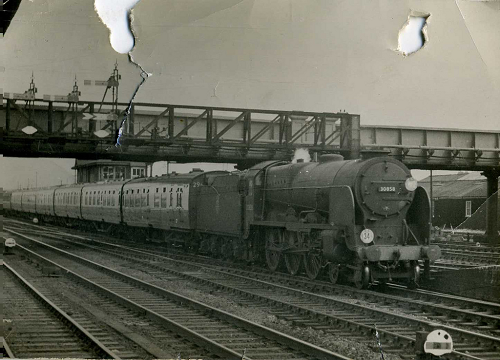 Steam engines were important to the evolution of courier services.'
Img283 ' by
Sludge G is licensed by
CC BY 4.0
Steam engines were important to the evolution of courier services.'
Img283 ' by
Sludge G is licensed by
CC BY 4.0
Hello, darlings!
Welcome to the second half of my two-part lesson on the history of courier service providers and networks! Yes, I'm still on my history kick, and I promised you all a second post about this subject, so here it is.
Now, last time, we were talking about courier networks and the different forms that they took in the time before computers ruled the world. Today's post, however, is going to be a little more general (hopefully not generic though): we're simply going to look back at the history of courier service providers throughout time, from when this type of function did not even have a name to the present day, when it is one of the most important parts of society.
I have, of course, done a bit of research on this before starting this post, and what I discovered was that the first time something similar to a courier service was used was in ancient times, namely by the Greeks and the Egyptians. The Greeks had their runners, who sped from one town to the next with messages or (in one famous case) the Olympic torch; the Egyptians, on the other hand, had their chain of boats along the Nile, which they used to (among other things) bring the stones for the pyramids from their original location to the place where they are now admired by thousands of tourists each year.
Unfortunately, these periods were followed (a mere few centuries later) by the Middle Ages, which represented a significant step backwards where all aspects of society are concerned! While there are accounts of knights galloping to nearby towns or castles to deliver messages or important parcels, the history of courier service providers doesn't really pick up until Renaissance times, when merchandise was sent to and from distant lands by boat. Sure, it took months or even years, but it was a courier service nonetheless! (Am I the only one shuddering to think of what would happen if something took two years to arrive at our door nowadays?)
Another important step in the history of courier service was taken during the Industrial Revolution, with steam engines and other such innovations. While in the years before then, services such as the Pony Express (in America) had been doing their job, the appearance of steam engines and, later, gas-powered ones meant the process was much faster and more immediate, making year-long waits for a packet a thing of the past! From there to the modern day, where machines and computers govern the whole process, it just many small and quick steps – in less than a century when compared to the several centuries in between the other periods.
So there you have it, then, dears – a brief overview of the history of this field we all love so much. I promise I'll try to get past my fixation with history for next month, and be a little more fun, but I hope you enjoyed it.
Until then, ta-ra!
- Gertie
x


















